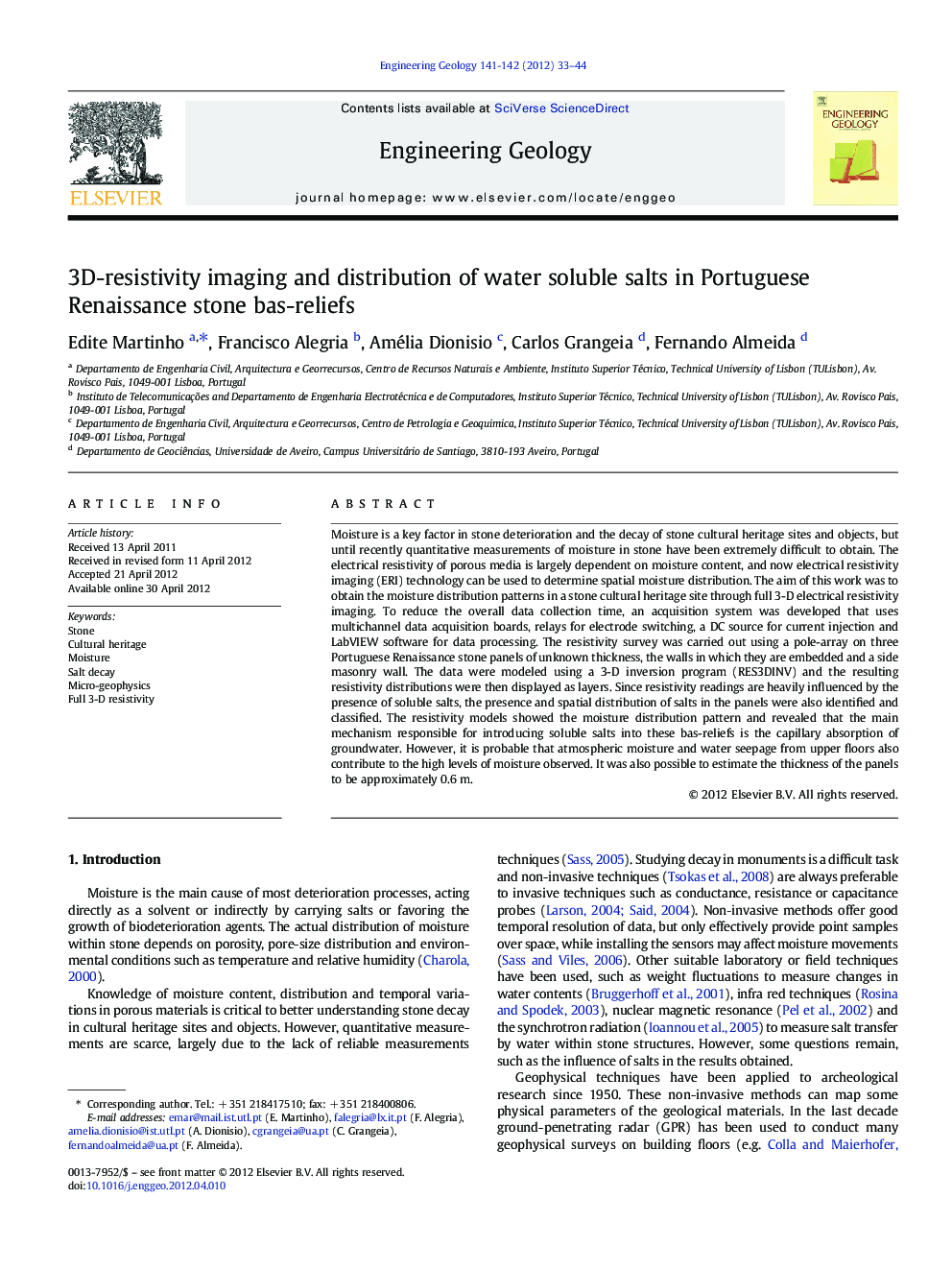| Article ID | Journal | Published Year | Pages | File Type |
|---|---|---|---|---|
| 4743947 | Engineering Geology | 2012 | 12 Pages |
Moisture is a key factor in stone deterioration and the decay of stone cultural heritage sites and objects, but until recently quantitative measurements of moisture in stone have been extremely difficult to obtain. The electrical resistivity of porous media is largely dependent on moisture content, and now electrical resistivity imaging (ERI) technology can be used to determine spatial moisture distribution. The aim of this work was to obtain the moisture distribution patterns in a stone cultural heritage site through full 3-D electrical resistivity imaging. To reduce the overall data collection time, an acquisition system was developed that uses multichannel data acquisition boards, relays for electrode switching, a DC source for current injection and LabVIEW software for data processing. The resistivity survey was carried out using a pole-array on three Portuguese Renaissance stone panels of unknown thickness, the walls in which they are embedded and a side masonry wall. The data were modeled using a 3-D inversion program (RES3DINV) and the resulting resistivity distributions were then displayed as layers. Since resistivity readings are heavily influenced by the presence of soluble salts, the presence and spatial distribution of salts in the panels were also identified and classified. The resistivity models showed the moisture distribution pattern and revealed that the main mechanism responsible for introducing soluble salts into these bas-reliefs is the capillary absorption of groundwater. However, it is probable that atmospheric moisture and water seepage from upper floors also contribute to the high levels of moisture observed. It was also possible to estimate the thickness of the panels to be approximately 0.6 m.
► Evaluation of salt decay in stone cultural heritage ► Application of full 3-D electrical resistivity imaging ► Resistivity allowed the identification of the patterns of the moisture distribution. ► The moisture can be detected with resistivity even if the salts are present.
